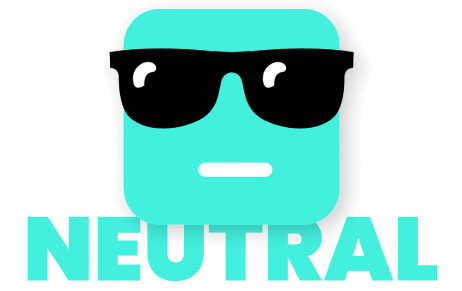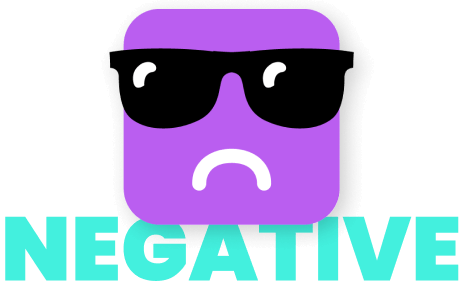Social media management tools have come a long way from just scheduling posts.
Nowadays, they’re equipped with deep analytics that offer a gold mine of information for data-driven decisions. For example, Sprout Social has introduced AI tools that use sentiment analysis so customers can better understand their audience, determine optimal campaign targets, and gauge customer feedback.
Sentiment analysis is allowing social media tools to help their users build stronger brand loyalty, capture deeper audience insights, and more thoroughly track campaign analytics. That enables businesses to more effectively analyze their online brand reputation, improve their calls to action, and generate more engaging content. Simply put: investing in sentiment analysis helps social media management platforms better serve their users.
Of course, this is all easier said than done.
Building an effective sentiment analysis tool requires extensive fine-tuning of a foundation model in order for it to make relevant and accurate analytics. Usually, this requires a lot of work by data scientists and machine learning engineers to meticulously collect, and prepare the right data to fine-tune their large language models (LLMs).
Nowadays, they’re equipped with deep analytics that offer a gold mine of information for data-driven decisions. For example, Sprout Social has introduced AI tools that use sentiment analysis so customers can better understand their audience, determine optimal campaign targets, and gauge customer feedback.
Sentiment analysis is allowing social media tools to help their users build stronger brand loyalty, capture deeper audience insights, and more thoroughly track campaign analytics. That enables businesses to more effectively analyze their online brand reputation, improve their calls to action, and generate more engaging content. Simply put: investing in sentiment analysis helps social media management platforms better serve their users.
Of course, this is all easier said than done.
Building an effective sentiment analysis tool requires extensive fine-tuning of a foundation model in order for it to make relevant and accurate analytics. Usually, this requires a lot of work by data scientists and machine learning engineers to meticulously collect, and prepare the right data to fine-tune their large language models (LLMs).
Sentiment analysis = Reading people’s minds, basically
Sentiment analysis is a key component of an NLU workflow. It enables AI models to accurately parse customer emotions and attitudes. When applied to online posts, AI sentiment analysis can give you a breakdown of positive, negative, and neutral feelings on a given community.For online brands, that is extremely valuable. Social media sentiment analysis allows brands to track conversations about them or their competitors with comprehensive analytics on how people feel – which is a big deal since feelings traditionally have not been an easily quantifiable metric! And since sentiment analysis works in real time, you can learn what audiences think right now instead of waiting for an end-of-week insights report.
Nevertheless, sentiment analysis is only valuable if it’s accurate. Social media management platforms are investing heavily in sentiment analysis, continuously fine-tuning their sentiment analysis models. Better sentiment analysis allows their users to make better-informed business decisions when creating products and online campaigns.
Nevertheless, sentiment analysis is only valuable if it’s accurate. Social media management platforms are investing heavily in sentiment analysis, continuously fine-tuning their sentiment analysis models. Better sentiment analysis allows their users to make better-informed business decisions when creating products and online campaigns.
Potential problems with fine-tuning sentiment analysis
Sentiment analysis is awesome to have as a product feature. However, you may have a challenging time fine-tuning it for 100% accuracy, and there are certain types of language that it may struggle to analyze.
Some of these challenges include:
Some of these challenges include:
Dataset Bias
Sentiment analysis models are highly prone to dataset bias. If the training data you use for fine-tuning isn’t diverse or representative enough, the model will develop biases that affect its performance on real-world data.
To prevent this, you need to curate a balanced and diverse dataset that captures a wide range of sentiments across different domains and demographics.
Sentiment analysis models are highly prone to dataset bias. If the training data you use for fine-tuning isn’t diverse or representative enough, the model will develop biases that affect its performance on real-world data.
To prevent this, you need to curate a balanced and diverse dataset that captures a wide range of sentiments across different domains and demographics.
Domain Adaptation
LLMs trained on generic text may struggle to perform well in specific domains (subject areas) or industries with domain-specific language and sentimental expressions.
Fine-tuning LLMs on domain-specific datasets can help bridge this gap by aligning your model's understanding with the particular nuances of the domain you’re targeting.
LLMs trained on generic text may struggle to perform well in specific domains (subject areas) or industries with domain-specific language and sentimental expressions.
Fine-tuning LLMs on domain-specific datasets can help bridge this gap by aligning your model's understanding with the particular nuances of the domain you’re targeting.
Labeling Challenges
Creating accurate labels for sentiment analysis data sets can be subjective and time-consuming.
Also, data preparation requires a lot of time – it can take up around 80% of data scientists' work hours and up to six months to fully finish. On top of that, different annotators (labelers) may have different interpretations of sentiment, which would lead to inconsistencies in labeling large datasets.
Creating accurate labels for sentiment analysis data sets can be subjective and time-consuming.
Also, data preparation requires a lot of time – it can take up around 80% of data scientists' work hours and up to six months to fully finish. On top of that, different annotators (labelers) may have different interpretations of sentiment, which would lead to inconsistencies in labeling large datasets.
Ethical Considerations
As with any AI technology, ethical issues surrounding bias, privacy, and responsible deployment are paramount when creating and fine-tuning LLMs for sentiment analysis. Transparency in model behavior, privacy protection measures, and ongoing evaluation are necessary for building trustworthy sentiment analysis systems.
As with any AI technology, ethical issues surrounding bias, privacy, and responsible deployment are paramount when creating and fine-tuning LLMs for sentiment analysis. Transparency in model behavior, privacy protection measures, and ongoing evaluation are necessary for building trustworthy sentiment analysis systems.
So, how do you go about properly building and fine-tuning AI sentiment analysis?
Well, we can show you…
Well, we can show you…
How to improve sentiment analysis LLM
We all know data is the lifeblood of LLMs. Without good data, AI models will fail to deliver accurate results. Of course, getting high-quality data can be challenging – especially when you need very specific datasets for certain topics, audiences, or industries.
It sounds daunting, but we’re here for you! Here's how Nurdle can improve your sentiment analysis algorithms:
It sounds daunting, but we’re here for you! Here's how Nurdle can improve your sentiment analysis algorithms:
1. Data Gap Analysis
Before you can improve an LLM or classifier, you need to identify what data, data clusters, and data categories you currently have in your dataset and what you are missing. If you already know what data you need, skip this section and head to step #2!
If you don’t know what data you need, Nurdle can provide you with a Data Gap Analysis report to identify what data your LLM is missing and how much of it you need. We’ll analyze your existing data and determine the clusters that are missing from your dataset and keeping you from achieving your goals.
If you don’t know what data you need, Nurdle can provide you with a Data Gap Analysis report to identify what data your LLM is missing and how much of it you need. We’ll analyze your existing data and determine the clusters that are missing from your dataset and keeping you from achieving your goals.

If you’re more of a do-it-yourselfer, Nurdle also offers a free Data Testing Tool.
It’s not as comprehensive as the full Data Gap Analysis, but you can dig into details of your dataset, like label bias, clustering, and language distribution, among other things. Best of all, you can do all this in Google Colab or on your desktop, so you don’t have to share any of your data.
It’s not as comprehensive as the full Data Gap Analysis, but you can dig into details of your dataset, like label bias, clustering, and language distribution, among other things. Best of all, you can do all this in Google Colab or on your desktop, so you don’t have to share any of your data.
2. Data Sourcing
To fine-tune a classifier (Especially for social management platforms!) you’ll need specific datasets – for instance, a social media platform tailored to users in the finance industry will need finance-focused data. For sentiment analysis datasets, you’ll need text from social media posts or comments that express positive, neutral, and negative emotions.
“I really liked working with the team to achieve my financial goals!”
“I’m not sure if I’ll make any money.”
“I’m going to sue this company for ripping me off!”
For instance



3. Data Preparation
After gathering all relevant data from your platform, it will need to be properly prepared in order to generate synthetic datasets. That includes scrubbing the data of personal identifiable information (PII), then labeling, cleaning, and classifying it.
Seriously, preparing data is a whole endeavor on its own. If you need it broken down, here are all the steps for sentiment analysis data preprocessing in one checklist:
Seriously, preparing data is a whole endeavor on its own. If you need it broken down, here are all the steps for sentiment analysis data preprocessing in one checklist:
Data Labeling
Data labels include positive, neutral, and negative. The data associated with positive and negative sentiment will be labeled, and all other data will be discarded.
Data labels include positive, neutral, and negative. The data associated with positive and negative sentiment will be labeled, and all other data will be discarded.
Data Cleaning
Cleaning involves fixing or removing incorrect, corrupted, incorrectly formatted, duplicate, or incomplete data within a dataset.
Cleaning involves fixing or removing incorrect, corrupted, incorrectly formatted, duplicate, or incomplete data within a dataset.
Data Standardization
This involves putting data into the right sizes and format, making sure all your labels are consistent, making sure the data is all-lowercase, removing HTML, and removing non-text end of line characters.
This involves putting data into the right sizes and format, making sure all your labels are consistent, making sure the data is all-lowercase, removing HTML, and removing non-text end of line characters.
Data Tokenization
This is the process of breaking up raw text into individual words, subwords, syllables, or phrases called tokens in order to help your LLM develop a better understanding of context and language processing.The tokens you create to represent each word or phrase should be stored in your token library so that they can remain consistent throughout the entire data prep process.
This is the process of breaking up raw text into individual words, subwords, syllables, or phrases called tokens in order to help your LLM develop a better understanding of context and language processing.The tokens you create to represent each word or phrase should be stored in your token library so that they can remain consistent throughout the entire data prep process.
Data Vectorization
Converting data to vector numbers in a multidimensional space for more efficient parsing by machine learning models.
Converting data to vector numbers in a multidimensional space for more efficient parsing by machine learning models.

After gathering all relevant data from your platform, it will need to be properly prepared in order to generate synthetic datasets. That includes scrubbing the data of personal identifiable information (PII), then labeling, cleaning, and classifying it.
Seriously, preparing data is a whole endeavor on its own. If you need it broken down, here are all the steps for sentiment analysis data preprocessing in one checklist:
Seriously, preparing data is a whole endeavor on its own. If you need it broken down, here are all the steps for sentiment analysis data preprocessing in one checklist:
4. Augment Your Data to Train the Classifier and Classification Model
Once you’ve prepped all your real data, it’s very likely you’ll discover that you don’t have enough of some part of it. Small training datasets cause overfitting, which basically means it can only give accurate responses for the examples you provided in the training data. The solution? You need to produce a massive amount of training data with minor variations so that there’s a broader range of examples for your model to draw from.
Up until now, this was where companies got stuck. Generating high-quality data that improved model performance required paying humans to find and label a bunch more data, which is a very expensive and slow process.
But now, you can use NurdleGPT to generate high-quality synthetic “lookalike” data to fill in the gaps. First-generation synthetic data has always had a bad reputation because, well, it’s pretty bad in quality. It’s great for making up fake addresses or Social Security numbers, but not so good for fine-tuning sentiment analysis classifiers. But NurdleGPT is an LLM built from years of human-generated chat data from social networks, gaming platforms, dating sites, and messaging apps, so it can easily augment unstructured text data to quickly and cheaply produce augmented data sets for fine-tuning.
Up until now, this was where companies got stuck. Generating high-quality data that improved model performance required paying humans to find and label a bunch more data, which is a very expensive and slow process.
But now, you can use NurdleGPT to generate high-quality synthetic “lookalike” data to fill in the gaps. First-generation synthetic data has always had a bad reputation because, well, it’s pretty bad in quality. It’s great for making up fake addresses or Social Security numbers, but not so good for fine-tuning sentiment analysis classifiers. But NurdleGPT is an LLM built from years of human-generated chat data from social networks, gaming platforms, dating sites, and messaging apps, so it can easily augment unstructured text data to quickly and cheaply produce augmented data sets for fine-tuning.

Justin Davis
Co-Founder and CEO
"Nurdle has been used for 6 years by Spectrum Labs to parse billions of online human interactions.
We've used Nurdle data to moderate content for Riot Games, Grindr, The Meet Group, Together Labs, and other gaming, dating, and social media platforms."
We've used Nurdle data to moderate content for Riot Games, Grindr, The Meet Group, Together Labs, and other gaming, dating, and social media platforms."







Nevertheless, there are some things to consider when generating your training data:
This refers to the lack of data on the specific topics or sentiments that you need in order to fine-tune an LLM to generate more data. As a result, you end up with a vanilla model that doesn’t reflect your precise data needs.If you have this problem, you’ll need a starting dataset. Sure, you can try to find a free one on HuggingFace. But if what you need isn’t available, Nurdle can generate one for you to your exact specs.
General purpose LLMs are not tailored to your specific use cases. Using them to create your synthetic data can lead to hallucinations, bias, inaccuracies, and a lack of specificity to your use case.
Cold start problem
Open-source LLMs like LLama2
We kind of covered this above, but first-gen synthetic data was built for tabular data, not unstructured text. This makes it great for scrambling data in a spreadsheet but not so good for creating new content.If you ask a synthetic data generator to produce synthetic text that looks like your training data, it’s going to be a very disappointing experience. But don’t take our word for it, you can see a comparison for yourself here.
Generating synthetic data with ChatGPT, especially with the super performant GPT4 version, sounds like it could work… and it does for some use-cases. But ChatGPT is a general LLM – jack of all trades, master of none.If you’re building a classifier that requires industry-specific, company-specific, or persona-specific knowledge, ChatGPT data probably won’t help much.For fine-tuning, you’ll want the most specific data you can find for your use-case. This tends to be pretty expensive – in fact, it costs nearly 128x more money than conventional methods of creating synthetic data, and may still have many challenges of working with vanilla open source models above.
Using first-generation synthetic data
Using ChatGPT
Wait, weren’t we talking about social media management?
Yes! Nurdle improves your LLM’s sentiment classification and topic analysis capabilities for social content by providing high-quality “lookalike” synthetic datasets for fine-tuning your model. That means Nurdle data isn’t just good for fine-tuning sentiment classification models, but also for fine-tuning classifiers in a wide range of specific use cases.
For social management tools, we also provide relevant and effective synthetic datasets of compelling intents alongside social media content, which are ready to use for training your LLM to generate highly relevant recommendations. Our synthetic datasets are created by combining data from your social posts with Nurdle’s data vault of real-world datasets, then focusing on the categories of data that we identified as missing in your Data Gap Analysis report.
For social management tools, we also provide relevant and effective synthetic datasets of compelling intents alongside social media content, which are ready to use for training your LLM to generate highly relevant recommendations. Our synthetic datasets are created by combining data from your social posts with Nurdle’s data vault of real-world datasets, then focusing on the categories of data that we identified as missing in your Data Gap Analysis report.
We produce high volume lookalike data (labeled or not); use your data to test it
Nurdlized Datasets
We produce high volume lookalike data (labeled or not); use your data to test it
Nurdlized Datasets
We detect ideal data clusters and what data is missing for your use-case
Data Gap Analysis
We detect ideal data clusters and what data is missing for your use-case
Data Gap Analysis
We compare yours with our pre-labelled LLM data vault
Nurdle Data Overlay
We compare yours with our pre-labelled LLM data vault
Nurdle Data Overlay
Yours or ours - as few as 50 rows
Real Data Sample
Yours or ours - as few as 50 rows
Real Data Sample
We produce high volume lookalike data (labeled or not); use your data to test it
Nurdlized Datasets
We detect ideal data clusters and what data is missing for your use-case
Data Gap Analysis
We compare yours with our pre-labelled LLM data vault
Nurdle Data Overlay
Yours or ours - as few as 50 rows
Real Data Sample
Data sourcing and preparation can be a gargantuan undertaking. It doesn’t just take a lot of time and work, but it also costs a lot of money.
Nurdle can handle all that for you – our synthetic data performs 92% as well as real-world data while costing 300x less. You can get ready-to-use Nurdle data in a matter of hours rather than spending weeks of time and money preparing it on your own.Get in touch with us to see how Nurdle can help populate your sentiment analysis database faster, easier, and cheaper. At the very least, your data scientists will stop hating their jobs!
Nurdle can handle all that for you – our synthetic data performs 92% as well as real-world data while costing 300x less. You can get ready-to-use Nurdle data in a matter of hours rather than spending weeks of time and money preparing it on your own.Get in touch with us to see how Nurdle can help populate your sentiment analysis database faster, easier, and cheaper. At the very least, your data scientists will stop hating their jobs!









